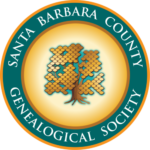Exhibit: Santa Barbara Asian American & Pacific Islander Heritage, 1870s-1970s
You Kee (aka Lee Tong) (1853-1919)
Merchant, Entrepreneur, Landowner, Husband, and Father
By Linda Bentz
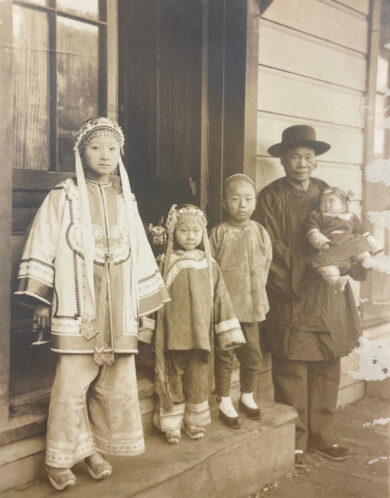
Lee Family circa 1902 (Courtesy of Gledhill Library, Santa Barbara Historical Museum)
Immigration and Business Story
Lee Tong was born in China on April 12, 1853. The date of his arrival to the United States was sometime between 1869 and 1872. By 1881, he was a merchant in Santa Barbara’s Chinatown on East Canon Perdido Street. The name of the business was You Kee, and the store sold Chinese and Japanese fancy goods. It was common for Chinese merchants to be known by their store name; therefore, Lee Tong was frequently referred to as You Kee.
Between 1885 and 1903, You Kee purchased three lots of land on the south easterly side of Canon Perdido Street. During You Kee’s tenure in Chinatown, he conducted business and lived at the following addresses: 19, 20 ½, 24, 25, 27 Canon Perdido Street.
Lee Tong was engaged with abalone harvesting on the Channel Islands. He was in partnership with other men from the Lee clan as well as fishermen from his hometown in China. A newspaper account from 1908 touted his success.
Big Season’s Abalone Catch
Four Santa Barbara Chinamen returned from Santa Cruz Island this morning on the large cattle schooner . . . . The party has been in camp on the south coast of Santa Cruz island for three months. The cargo which is being unloaded today consists of 12 tons of shells, worth $50 per ton; six tons of cured abalone meat valued at $160 per ton, and two tons of sea grass.
The four Chinamen will earn nearly $2000 as the result of their three months work. The party was managed by Ah Poy and financed by You Kee, a merchant on Canon Perdido street.
The abalone meat, which was cured by the Chinamen on the island, will be sold to San Francisco and shipped either to Honolulu or China. Abalone meat is popular both with Japanese and Chinese.
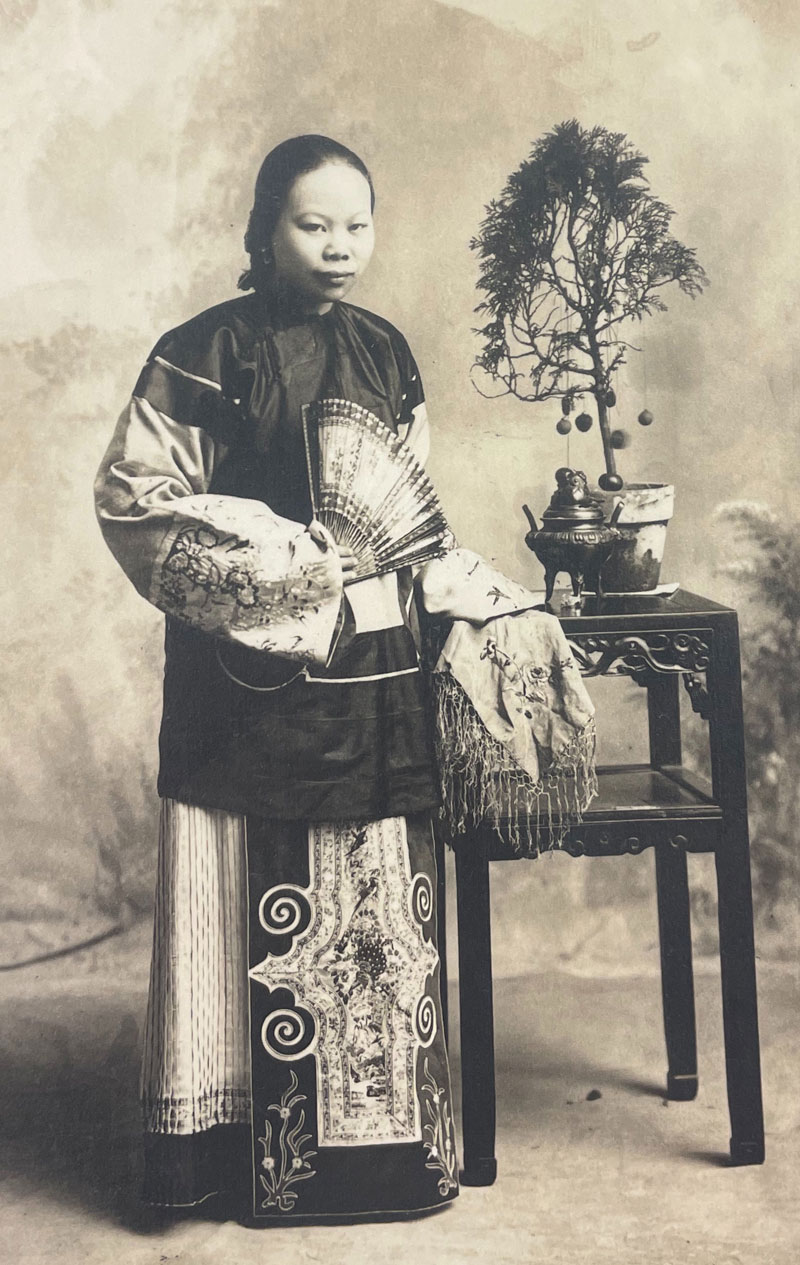
Chin Sui (aka Lillie You Kee) 1904 (Courtesy of Gledhill Library, Santa Barbara Historical Museum)
Marriage and Children
Lee Tong married Chin Sui, from Sonora, California, in 1888. They had their first child, Mabel, in 1890, and by 1898 they had five children, Mabel, Ida, Walter and Pearl, and an unnamed child.
According to the 1900 census Chin Siu stated she had five children; however, only three were living at that time. Another child was born in 1902.
In 1904, Walter You Kee died from pneumonia. A newspaper account stated, “He was an exceptionally bright lad and popular with his teachers and class mates.” Walter was 13 years old when he died.
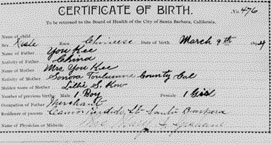
City of Santa Barbara Certificate of Birth, 1894 (Digital copy courtesy of Santa Barbara County Genealogical Society)
The eldest Lee daughter, Mabel, was an accomplished orator. The following account of her skills was published in the newspaper in 1898.
[Public entertainment at Grace M.E. Church] Perhaps nothing of the entire program was so good, or received such applause as the recitation by little Miss Mabel You Kee. Her English rendition was without accent, and was very clear, while the same thing, rendered in the Chinese language, was delightful. She was arrayed in Oriental garments, and this one piece of the program was alone worth the whole price of admission.
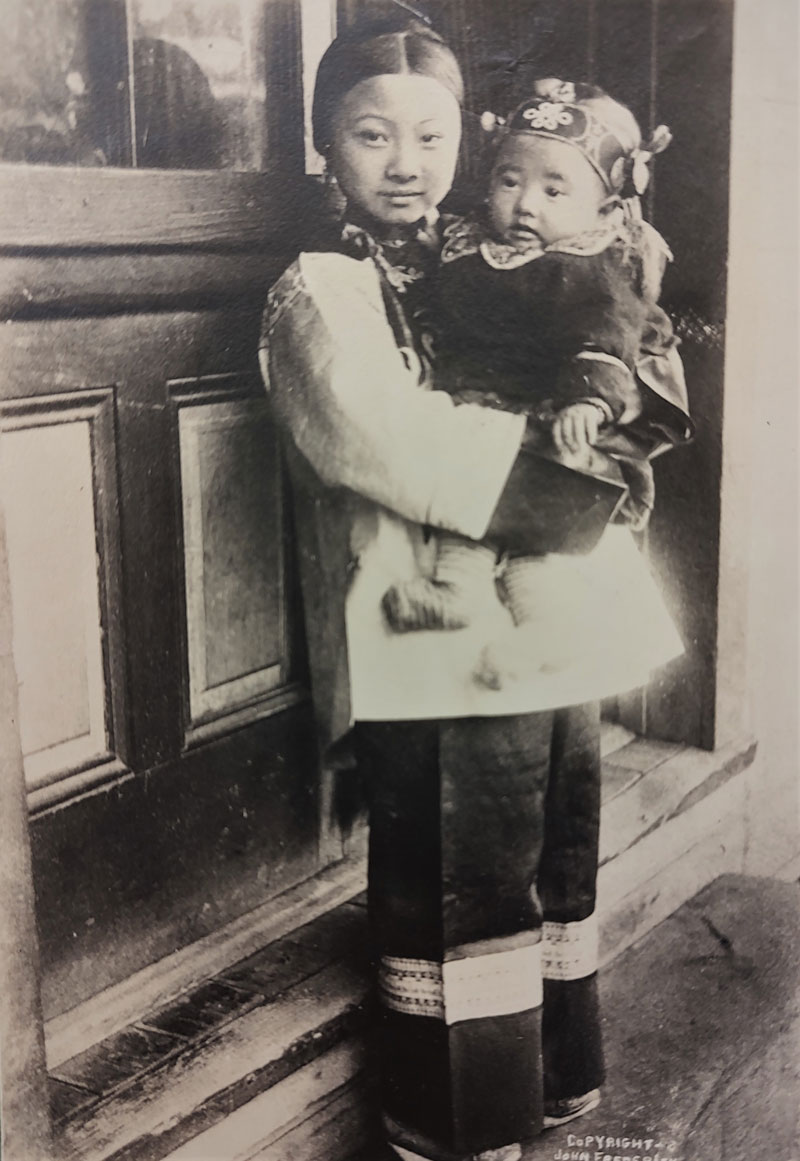
Mabel You Kee 1902 (Courtesy of Gledhill Library, Santa Barbara Historical Museum)
Activities in Chinatown
Lunar New Year was the most festive celebration in Chinatowns in the West. In Santa Barbara, Chinese merchants asked permission to light firecrackers.
Chinese New Year
Mayor’s Office
Santa Barbara, Feb. 10, 1893
Under and by authority vested in me by Sec. 13 of Ordinance No. 62, of the city of Santa Barbara, State of California, I hereby grant permission to Hing Lee, You Kee, Gee Lee, Fong Lee Yuen, Quong Sang, Sing Chung, Sing Hop, Sing Lung, Wah Lee, Tick Lee, Wo Chung, Tung Seng Wo, Kuy Fong, Wah Hing, Tom Hing and Sune Hang and their associates, to set off and ignite fireworks, firecrackers, etc., in celebration of the Chinese New Year, on the following days between the hours as herein below set forth, namely: February 15, 1893, 2 p.m. to 9 p.m.; 16th, 12 midnight to 7 a. m. and 12 m., and within the following limits to wit: Canon Perdido street, between the westerly line of the alley near the Theatre Opera House, and a point 50 feet easterly from State street; also in the vacant lot located at the southeasterly corner of State and Canon Perdido streets; the discharge of said fireworks, etc., to be under the subject to police supervision.
Chinese merchants also donated to local Santa Barbara activities such as in 1890, You Kee was among 12 merchants who contributed to the Fourth of July Fund. In 1899, Chinatown merchants also donated to a fund for medals for soldiers from the Spanish War.
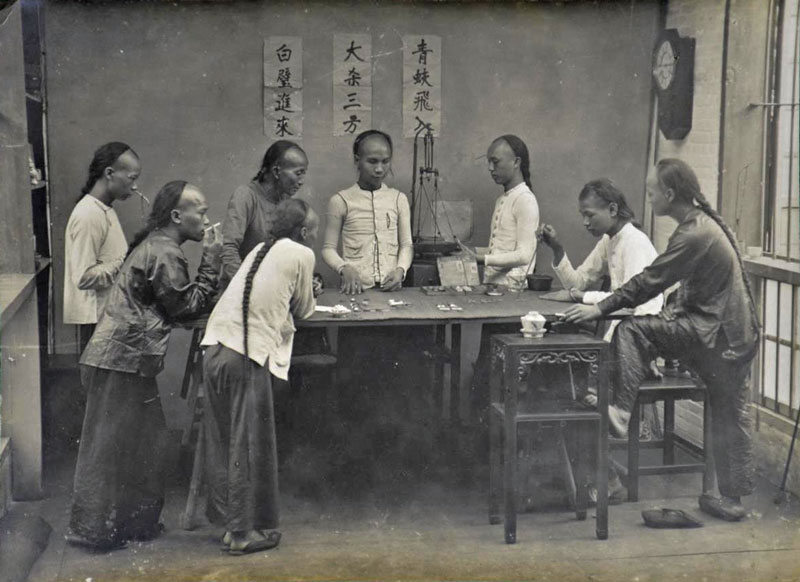
Fan Tan table (Courtesy of Wiki Commons)
Lee Tong was arrested on several occasions for running a gambling establishment. While gambling was considered illegal in the 19th century, it was a social activity where many residents of Chinatown enjoyed these games of chance. Chinese workers and residents would come to Chinatown to gamble with their countrymen. One of the games they played was fan tan, in which buttons were counted out in groups of four and players guessed the number of the remaining buttons. Revenue from gambling helped to fund local Chinese celebrations such as Lunar New Year.
Changes in the Lee Family
Sometime between 1904 and 1913, it appears Chin Sui passed away. Lee Tong traveled to China in 1913, and returned a year later with a new wife. The local newspaper announced the event.
Happy Chinaman
You Kee, who for twenty-five years has figured as one of the solid and respected merchants of Chinatown, has returned from a year’s visit in his native land, with what he considers the best acquisition of his career, a young wife of whom he is naturally very proud. The You Kee domicile, at 20½ Canon Perdido street, was the scene of very cordial congratulations yesterday, and all the visitors had the felicity of an introduction to the new lady of the house and the satisfaction of receiving a cup of tea and an assortment of Chinese nuts and candies from her hands. The happy groom, who speaks English plainly, but with the usual Oriental “brogue” and peculiar idioms, frequently and benignly declared to his white visitors: “my wife, him velly pretty.”
It appears Lee Tong and his new wife moved to San Francisco sometime after 1917. The girls of the family were sent away to school.
Lee Tong died on July 11, 1919 in Santa Barbara. He was honored in the following obituary.
Chinese Funeral Rites Over Late Lee Tong’s Body
Amid the elaborate rites of an Oriental funeral, the body of Lee Tong, prominent Chinese merchant and importer, was escorted to the Santa Barbara cemetery yesterday afternoon. The ceremonies were held in Chinatown at 1 p. m., with a large number of Chinese and American witnesses present. One of the features of the services was the surrounding of the corpse with cooked and raw foods of many varieties, including a whole sheep. The body was placed in a vault, awaiting shipment to Hong Kong, China, where cremation of the deceased will take place according to the rites peculiar to the Chinese. Yesterday’s funeral was said to have been one of the largest ever conducted by the local Chinese colony, of which Lee Tong was one of the most popular members. Deceased leaves a widow and two children in this country (Morning Press July 15, 1919).
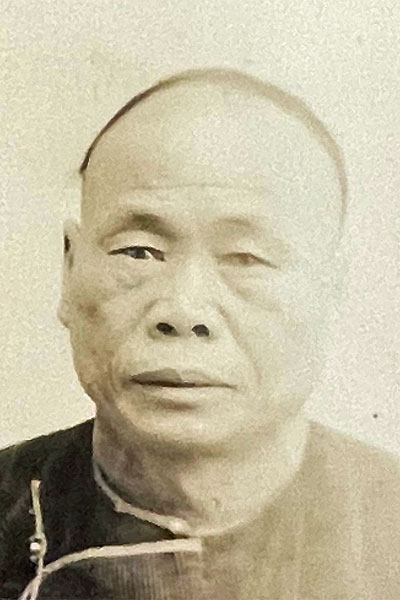
Lee Tong (aka You Kee) (Courtesy of Gledhill Library, Santa Barbara Historical Museum)
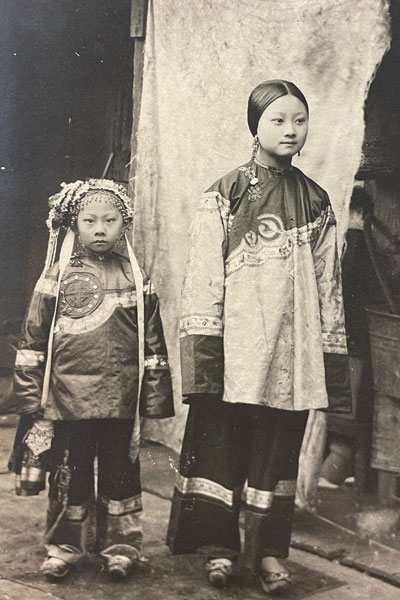
Ida and Mabel You Kee (Courtesy of Gledhill Library, Santa Barbara Historical Museum)
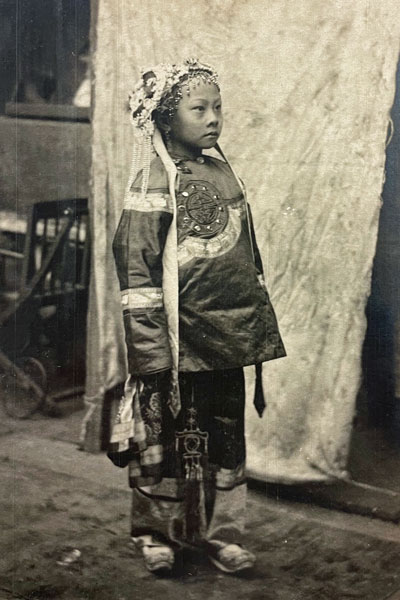
Ida You Kee (Courtesy of Gledhill Library, Santa Barbara Historical Museum)
References
H.H. “A Chinese New Year’s Day in Santa Barbara.” Century Magazine January 1883, pp: 201-205.
Santa Barbara Book of Deeds: Book 5 page 221 Recorded January 15, 1885.
Santa Barbara Book of Deeds: Book 27 page 412 Recorded June 27, 1890.
Santa Barbara Book of Deeds: Book 90 page 423 Recorded October 14, 1903.
Santa Barbara Morning Press June 10, 1890.
——February 11 & 12, & 14 1893
——March 24, 1898
——August 8, 1899
——March 22, 1904
——February 22, 1913
——March 15, 1914
Santa Barbara The Independent August 31, 1908.
You Kee Partnership List. National Archives San Bruno California.
